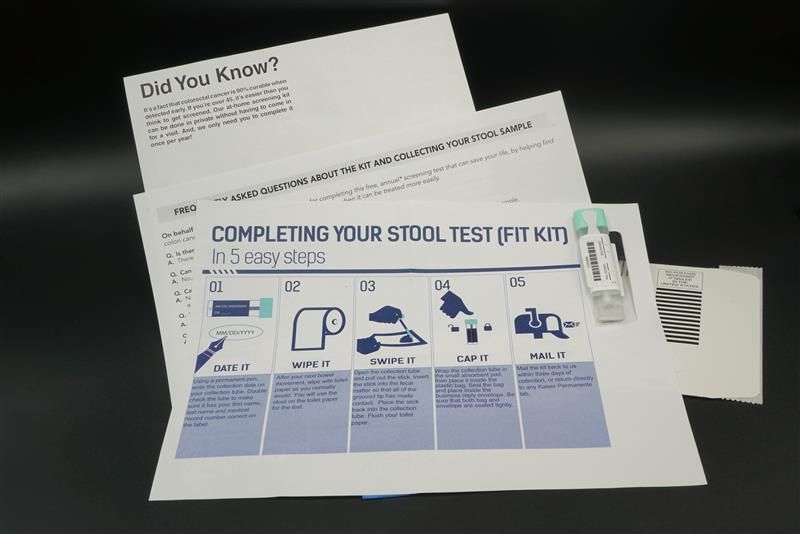News
Article
Unmeasured Social Context Could Explain Racial Differences in Screening for CRC
Author(s):
Screening for colorectal cancer (CRC) is defined by racial differences, which could be explained through social context.
Social context could play a role in the differences in screening for colorectal cancer (CRC), according to a study published in Ochsner Journal. Racial differences in screening adherence could be driven by social context that also affects disparities in CRC.
Cancer disparities in demographic groups have persisted even as CRC incidence has declined overall in the past 50 years. Socioeconomic inequalities have driven the differences in access, early detection, and timely treatment in CRC disparities.
"A complex array of factors (patient, provider, health system, community, public policy) impact cancer screening utilization," the authors noted.
The incidence and mortality rates for CRC are higher than the national rates in Louisiana, where these disparities persist even though the incidence and mortality rates of CRC have been declining overall. This study aimed to examine how relationships between CRC, area deprivation index (ADI), and patient characteristics differ by population and the strength of the associations by subpopulations.
Gastroenterologist doctor, intestine specialist. Aesthetic handdrawn highlighted illustration of human intestine. Dark grey background, studio photo and collage. | Image credit: mi_viri - stock.adobe.com

This study conducted a retrospective cohort analysis on patients who were aged 50 to 75 years when they were treated at Ochsner Health, which consists of 47 hospitals and 370 health and urgent care centers, between July 1, 2012, and December 31, 2020. The observational period took place from July 1, 2013, to December 31, 2019. Patients were included if they were aged 50 to 74 years, had no diagnosis of CRC prior to the index period, were residents of Louisiana, and had 3 or more primary care encounters.
Fulfilling the CRC screening guidelines was defined as doing at least a colonoscopy every 10 years, fecal immunochemical tests every year, stool DNA test every 1 to 3 years, high sensitivity guaiac fecal occult blood test every year, or flexible sigmoidoscopy every 5 years. The end of a follow-up period was when the patient aged out of the recommended age range, the date of a cancer diagnosis, or the end of the study. Dates of procedures in the records of the patient were used to determine adherence in a patient.
There were 75,344 patients included in this study who had ADI geocoding recorded and met eligibility criteria. A total of 59.8% were female, 36.1% were Black, and 2.4% were Hispanic. Patients who had ADI geocoding were more often married or had a partner (56%), publicly insured (42%), and had residences in areas with high deprivation (17%). A total of 41% of the ADI group had 2 or more chronic conditions and 51% were obese.
Variables that were associated with adherence to screening included living in less-deprived areas/lower ADI, having a high number of comorbidities, and having outpatient visits. Patients aged 55 to 59 years, were male, and were insured with Medicaid had lower odds of having CRC screenings. Prior outpatient encounters were the strongest predictor of screening.
Uninsured patients and those with prior outpatient encounters had significant differences in odds of screening for CRC. The lack of insurance decreased odds of adherence to screening male patients whereas the odds of screening increased when the patient had prior outpatient encounters, though the latter had a stronger association in female patients.
Black patients had higher odds of adherence compared with White patients through the ADI and prior outpatient encounters associations. However, White patients had increased odds of screening with older age compared with Black patients. White patients had higher odds of screening for CRC within each insurance type as well as with increasing comorbidities. Patients who used Medicaid had decreased odds of adherence regardless of race.
There were some limitations to this study. The use of a single health system could limit the generalizability. Only events that occurred within the database of the health system, which could have led to underestimation of screenings. SDOH questionnaires were given to all patients for self-reporting but not all elements are captured for every patient. The study could not determine which component of deprivation had the highest association with screening adherence.
The authors concluded that “the social context that drives disparities in CRC incidence and mortality also increases risk for CRC screening nonadherence.” Individual-level SDOH needs to be further studied for their individual association with screening for CRC.
Reference
Price-Haywood EG, Burton JH. Racial differences in strength of associations between colorectal cancer screening, area deprivation, demographics, and clinical characteristics. Ochsner J. 2023;23:194-205. doi:10.31486/toj.23.0012
2 Commerce Drive
Suite 100
Cranbury, NJ 08512
© 2025 MJH Life Sciences® and AJMC®.
All rights reserved.





